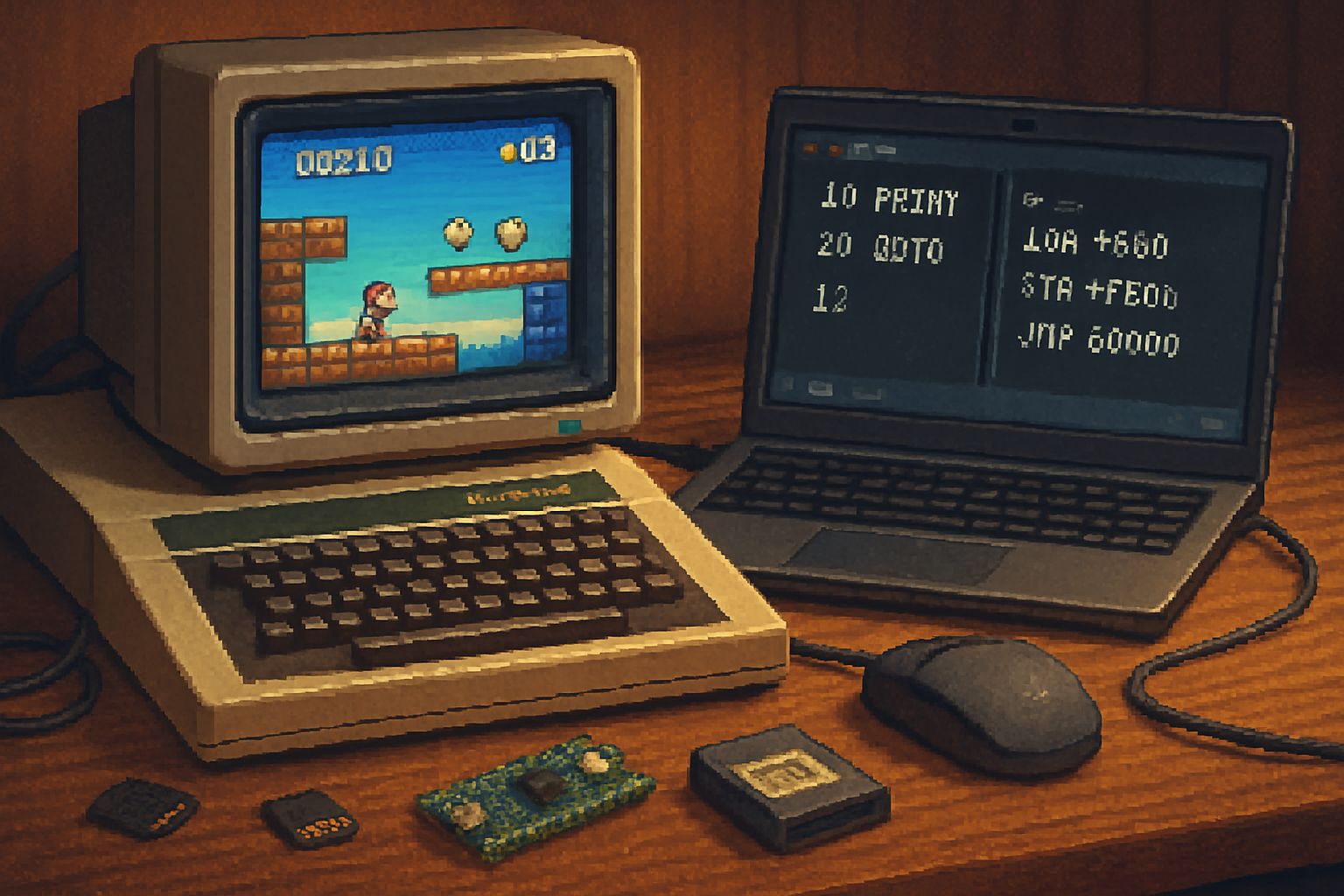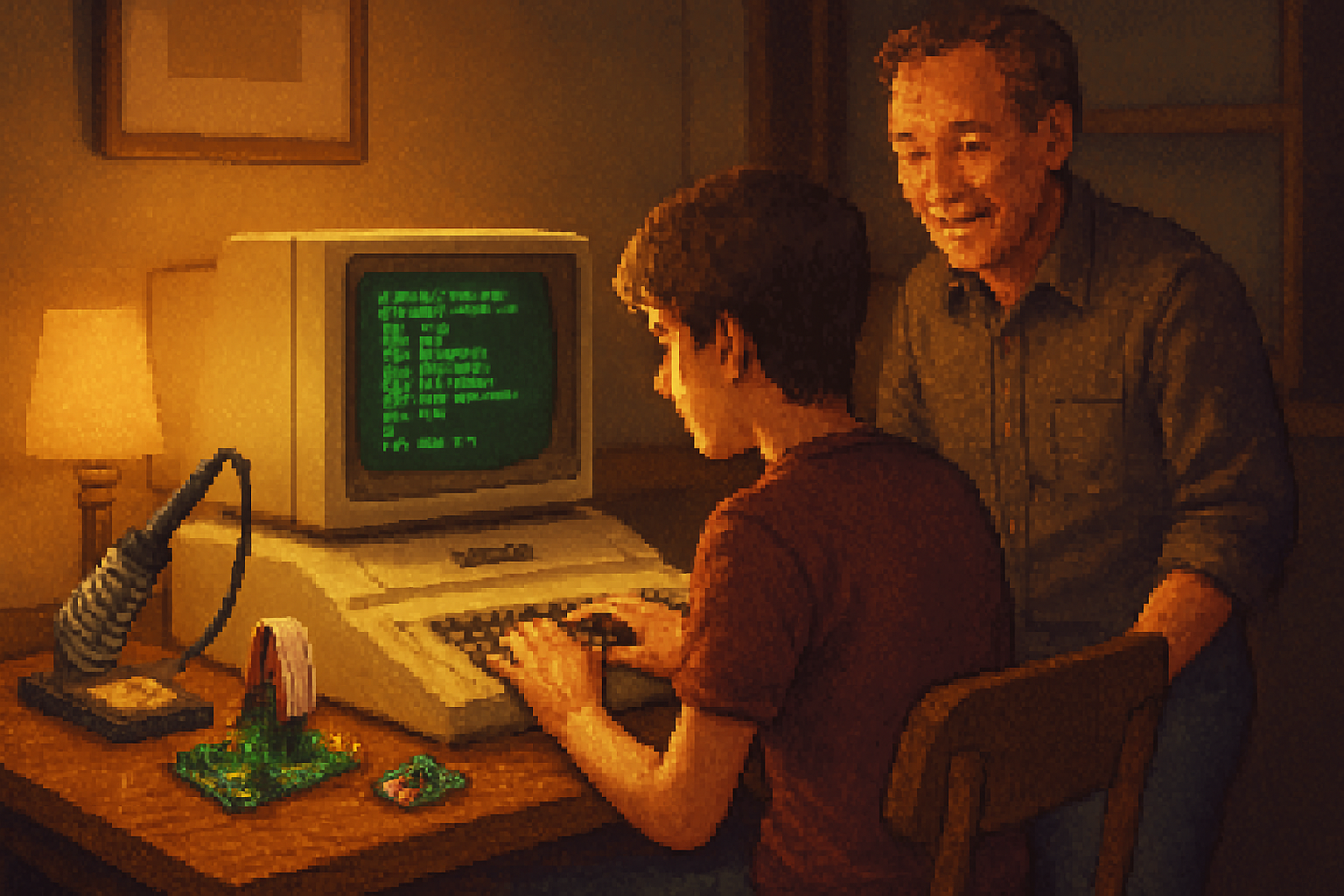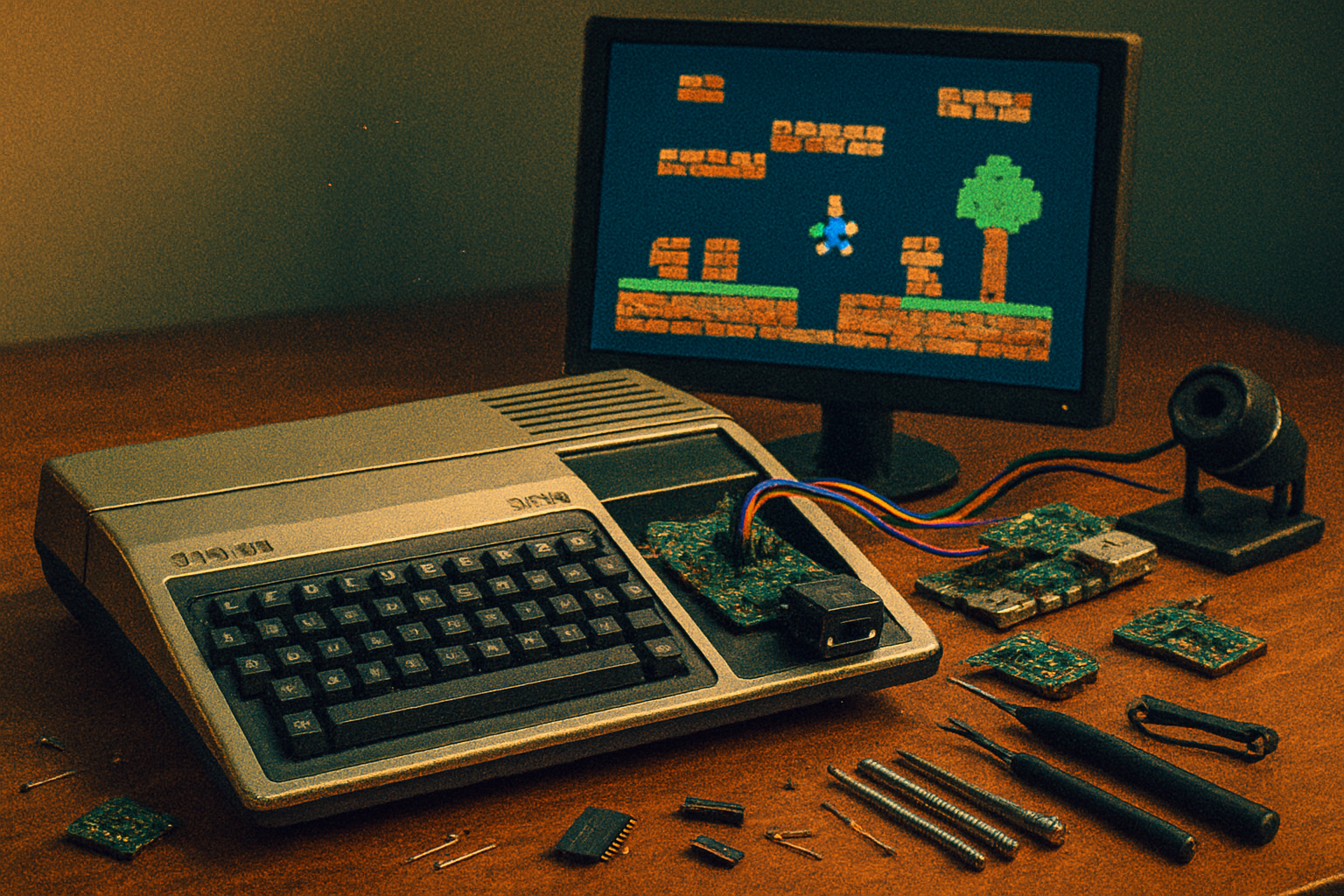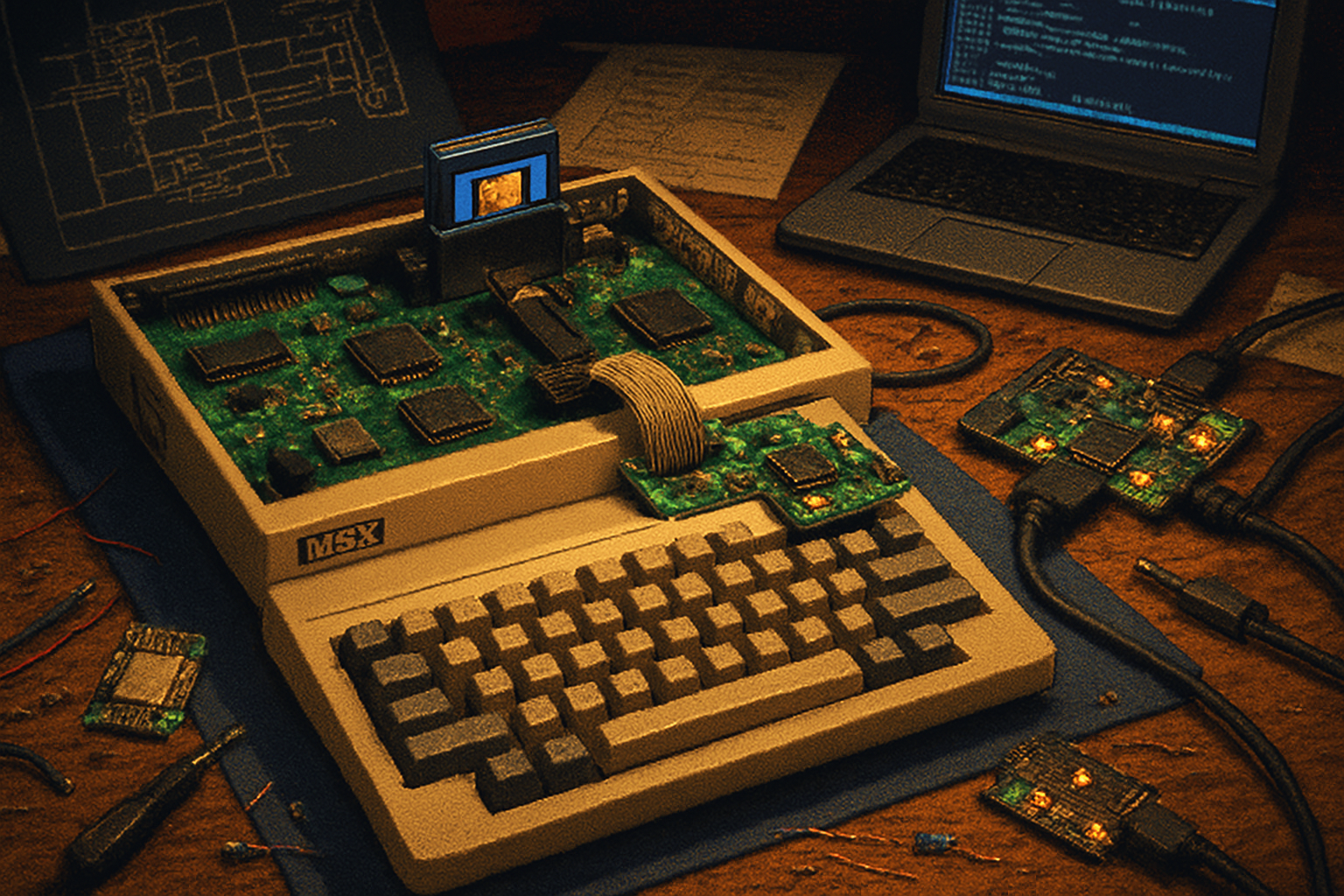· retrotech · 5 min read
Reviving the Acorn Electron: Modern Uses for a Retro Gem
A practical guide to breathing new life into the Acorn Electron: modern programming workflows, game development strategies, emulator-based development, and approachable hardware modifications for makers and retro enthusiasts.

Why the Acorn Electron still matters
The Acorn Electron was introduced in 1983 as a compact, affordable sibling of the BBC Micro. Though limited compared with contemporary hardware, its simplicity, large library of software, and enthusiastic community make it a prime candidate for retro projects today. The Electron’s combination of BBC BASIC compatibility, 6502-family CPU architecture, and expandable I/O invite both software and hardware experimentation.
For historical context and technical details, see the Acorn Electron article on Wikipedia and the Centre for Computing History entry:
- https://en.wikipedia.org/wiki/Acorn_Electron
- https://www.computinghistory.org.uk/det/3600/Acorn-Electron/
Modern workflows: developing for the Electron today
You don’t need to write everything on vintage hardware. Modern development workflows blend familiar PC tools with emulators and cross-compilers, enabling comfortable, productive work while still targeting original machines.
Emulation-first development - use an Electron emulator to iterate quickly. ElectrEm is a popular option that runs on modern OSes and supports disk/cassette images for testing:
Cross-development - write BBC BASIC on the emulator, or develop 6502 assembly on a modern machine using cross-assemblers and linkers. Code can be packaged into ROM images, tape images, or disk images for the emulator or real hardware.
Version control and tooling - store BASIC and assembly sources in Git. Use modern editors with syntax highlighting for 6502 and BASIC. Many contributors maintain toolchains and scripts that automate building and packaging.
Community resources - the BeebWiki and stardot forums are indispensable for technical reference and collaboration:
Game development on a retro canvas
The Electron’s constrained resources shape the kinds of games that thrive on it: compact arcade-style titles, puzzle games, text adventures, and demos that creatively reuse memory and graphics.
Practical tips:
Start small. Build a 2D single-screen arcade or puzzle title. Focus on gameplay rather than pushing every possible technical limit.
Use BBC BASIC or write hot inner loops in 6502 assembly. A hybrid approach-BASIC for game logic and assembly for tight sprite updates-works well.
Asset constraints as design features. Low-res graphics and small palettes encourage stylised art and clever level design.
Sound and music - the Electron has simple audio capabilities. Repetition and short effects are effective; consider augmenting with external hardware if you want richer audio.
Example: a minimal BBC BASIC game loop
10 REM Tiny Electron dodge game
20 MODE 1: REM GRAPHICS MODE
30 LET x=160: LET y=100: LET vx=0: LET vy=0
40 CLS: PRINT AT y,x;"O"
50 GET k$
60 IF k$="a" THEN vx=-2
70 IF k$="d" THEN vx=2
80 IF k$="w" THEN vy=-2
90 IF k$="s" THEN vy=2
100 LET x=x+vx: LET y=y+vy
110 IF x<0 THEN x=0
120 IF y<0 THEN y=0
130 IF x>320 THEN x=320
140 IF y>192 THEN y=192
150 GOTO 40This little example shows how quickly you can produce playable prototypes on an Electron or its emulator.
Hardware projects and modern interfaces
The Electron’s expansion capabilities unlock many modernization paths. Here are approachable projects that don’t require deep hardware expertise:
Storage upgrades - replace tape-only workflows with flash-based storage or SD interfaces that present disk images. This simplifies loading software and deploying updates from a modern machine.
ROM/Cartridge projects - build a simple ROM cartridge that holds your program, letting you boot instantly on real hardware. This is a great way to distribute demos or games to collectors.
IO and sensors - connect microcontrollers (Arduino, ESP32, Raspberry Pi Pico) to the Electron’s I/O bus to add sensors, external displays, or new input devices. Use the Electron to drive a physical installation or museum exhibit.
MIDI and audio interfaces - use a small microcontroller as a bridge to convert Electron-generated signals into MIDI or higher-quality audio for modern synths.
FPGA and MiSTer - if you’re interested in system-level recreation, the MiSTer FPGA project brings accurate hardware implementations of many classic systems. It’s an advanced path for those interested in preserving and extending retro hardware in a deterministic environment:
Emulation, preservation, and distribution
Emulators not only enable development but also play a crucial role in preserving software. When building projects:
Package your work as emulator-friendly disk or tape images so others can try it immediately.
Document build steps and include source code. Open-source releases keep projects reproducible and preserve knowledge for future hobbyists.
Share on community hubs like stardot and BeebWiki. These sites help projects find players, testers, and collaborators.
Example project ideas (with scope and difficulty)
- Micro-challenge pack (Easy) - 5 tiny BASIC games or demos, each under 4KB.
- Cartridge compilation (Moderate) - consolidate a handful of programs into a ROM image with a boot menu.
- Sensor-driven art piece (Moderate) - Electron receives input from a microcontroller and visualises data in real time.
- Full arcade port (Hard) - Recreate a small arcade game in hybrid BASIC/assembly with custom sprites and levels.
- FPGA reproduction and expansion (Advanced) - Implement Electron logic on MiSTer or a DIY FPGA board and add optional modern I/O.
Porting lessons from the community
Read established technical guides before you start. The BeebWiki contains hardware maps, memory layout, and programming quirks.
Respect timing - many hardware tricks rely on precise CPU cycles. When writing in assembly or timing-dependent BASIC, profile on an emulator or real hardware.
Keep the player experience in mind - loading times and fragile tape workflows can frustrate players; use flash solutions where possible.
Resources and further reading
- Acorn Electron on Wikipedia: https://en.wikipedia.org/wiki/Acorn_Electron
- BeebWiki (technical reference): https://beebwiki.mdfs.net/Acorn_Electron
- ElectrEm emulator: https://sourceforge.net/projects/electrem/
- Stardot community forums: https://stardot.org.uk/
- Centre for Computing History: https://www.computinghistory.org.uk/det/3600/Acorn-Electron/
- MiSTer FPGA project: https://mistfpga.org/
Final thoughts
Reviving the Acorn Electron is more than nostalgia. It’s an opportunity to learn constrained programming, connect modern peripherals to classic hardware, and contribute to the preservation of computing history. Whether you want to write a small BASIC game, craft a hardware interface, or assemble a ROM cartridge for a demo, the Electron remains a friendly, rewarding platform for modern retro projects.



